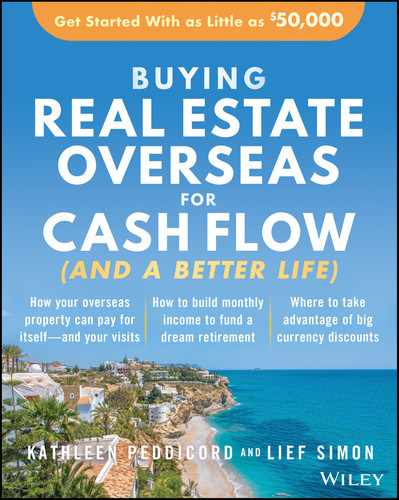6
Consider Shopping for Financing Back Home or with the Developer
If financing your real estate purchase overseas through a local bank isn't a realistic option (because the market where you want to buy doesn't lend to nonresident foreigners or because your financial situation doesn't qualify you), you have alternatives.
The first and easiest—sometimes even if local financing is available and you do qualify—can be to take out a loan back home. No, your local U.S. bank isn't going to fund your overseas real estate purchase directly. With the exception of some banks in Texas and California that have at times over the years offered loans in Mexico, U.S. banks don't have the infrastructure to protect themselves against default in a foreign country. How would they foreclose and recuperate their funds?
U.S. banks do, however, offer home equity loans and lines of credit. This was an important source of funding during the rapidly appreciating U.S. market leading up to 2008. Taking out a $100,000 equity loan, say, on your principal residence in the United States to invest in a condo at the beach in Brazil or the Dominican Republic can be a straightforward strategy. Your U.S. lending bank doesn't typically care what you use the money for as long as they're happy with the metrics to do with the value of the collateral and your debt-to-income ratio.
You should care, though. If you're lucky enough to own a piece of property in the United States that has enough equity to allow you to draw out and invest in another property in another country, make sure you run your own numbers and that you're comfortable with the math. Just because a bank will lend to you doesn't necessarily mean you should borrow.
The most important calculation to make is whether or not you can cover the payment on the equity line if your overseas rental doesn't produce the monthly income you're projecting right away. It can take time to build up a short-term rental clientele, and many short-term rental markets are seasonal, meaning inconsistent cash flows month to month even if your annual rental income should be more than enough to cover your loan payments. Run worst-case scenarios. The last thing you want is to put your primary residence or even another rental property in jeopardy.
In addition to tapping into equity you've built up back home, another option for financing overseas can come courtesy of the developer. Developers who build for and sell to the foreign market understand that foreign buyers want and can need financing, so many offer payment programs. These can include preconstruction purchase terms, payment plans, and straight-up financing.
Developers are often happy to offer land sales with financing, because this means cash flow that can help cover the costs of installing infrastructure. Typically, with this kind of financing, you don't receive title until you've paid for the property in full. The developer is protected because he technically still owns the property. Your payments are protected by your purchase contract.
Buying preconstruction means a payment plan. This can be tied to construction milestones, or it can mean regular payments (even, for example, monthly payments made on a credit card). This isn't financing, per se, as there's no loan to value (LTV) and no interest rate and payments are due over, say, 12 to 36 months rather than amortized over 20 to 25 years. When the building is complete, you're required to come up with the final amount due, which can vary from 10% to as much as 50%.
Less common but occasionally possible is full-fledged developer financing. Typically, a developer can't afford to do this for all units in a building (because it wouldn't give him enough cash for construction), but sometimes a developer will offer this for a small number of sales. We've seen this most often in Panama and the Dominican Republic.
In some markets, you'll find sellers willing to carry back a portion of the purchase price if you're able to make a sizable down payment. Again, this is most common in markets with big pools of foreign buyers. Like developers, though, individual sellers financing a sale aren't going to give you 30 or even 20 years to pay off the loan. Three to seven years is typical. Expect to be charged interest at the going local rate. We negotiated the purchase of a building in Panama, for example, where the seller carried back the mortgage at the typical bank rate at the time but for a term of 10 years.
We'll look closely at three markets in particular, where financing is relatively easy to organize as a foreign buyer, in Part IV.
